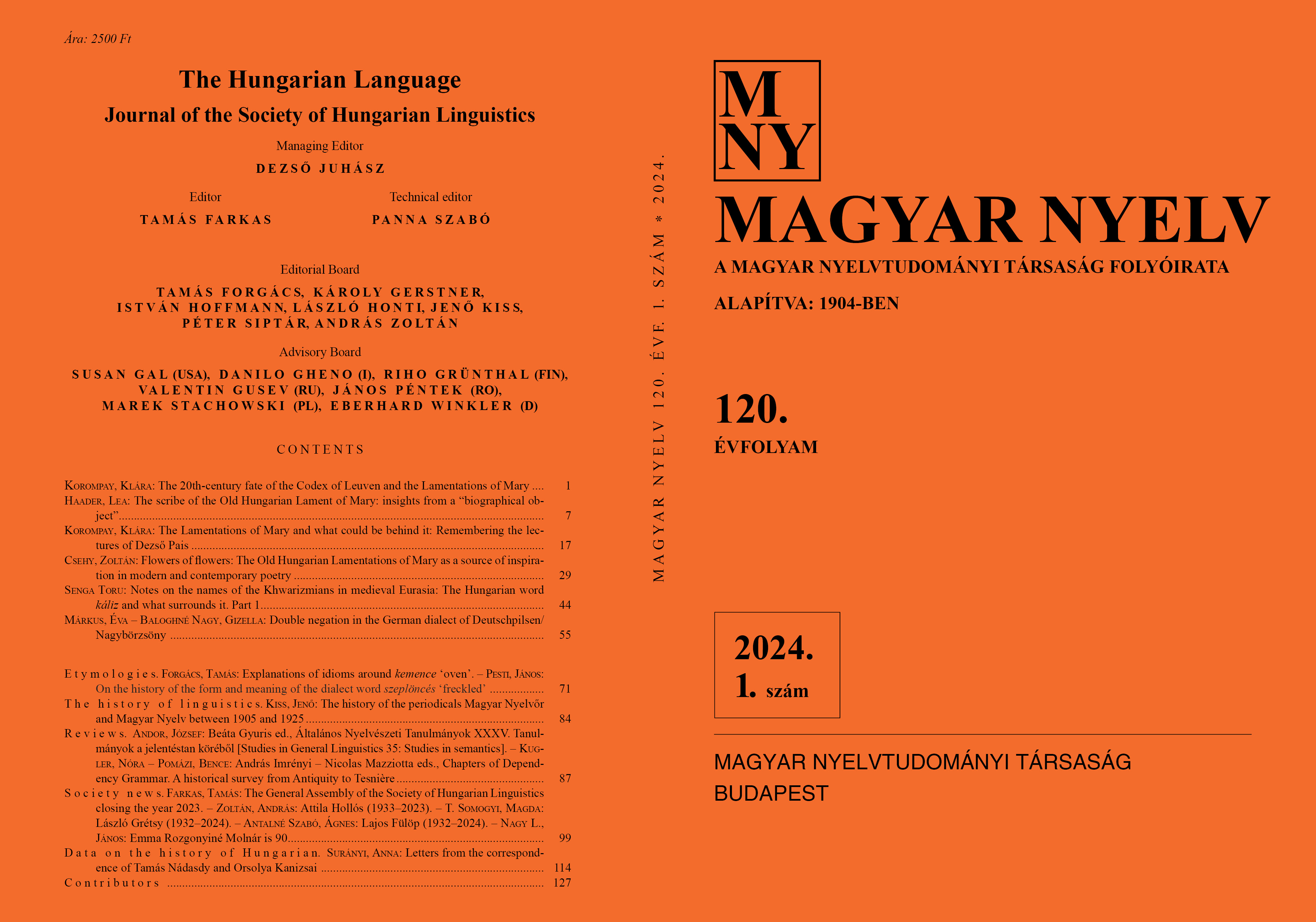Double negation in the German dialect of Deutschpilsen/ Nagybörzsöny
DOI:
https://doi.org/10.18349/MagyarNyelv.2024.1.55Keywords:
German dialect, syntax, negation, negative concord, language islandAbstract
This study investigates the linguistic expressions of negation in the German dialect of Deutschpilsen/Nagybörzsöny. First, we analyse the forms of simple negation, then the dialectal manifestations of negative doubling and negative spread. The latter notions refer to contexts in that several negative expressions occur within a sentence, but they do not cancel each other out, but rather reinforce each other. Such constructions are well attested in German dialects, and in earlier stages of the German language. Negative spread is characteristic of the contact language Hungarian, too; thus, it could be concluded that it was introduced into the Nagybörzsöny dialect by Hungarian influence, but since no other grammatical or syntactic influence from the Hungarian language can be detected – only a few lexical items were transferred into the dialect as loanwords –, we do not think that this is the case. In the second half of the study, we sketch a syntactic analysis of sentential negation in the dialect, with special focus on the single negation interpretation of clauses containing two or more negative expressions. It is also important to mention the variable position of the negative marker and to seek its origin in language history. To complete our analysis, we briefly present the syntactic structure of Hungarian sentential negation, to gain a better understanding of possible contact phenomena or their absence between the two languages.
Downloads
Published
Issue
Section
License
Copyright (c) 2024 Éva Márkus , Gizella Baloghné Nagy

This work is licensed under a Creative Commons Attribution-NonCommercial-NoDerivatives 4.0 International License.
Magyar Nyelv is a Diamond Open Access periodical. Documents can be freely downloaded and duplicated in an electronic format, and can be used unchanged and with due reference to the original source. Such use must not serve commercial purposes. In the case of any form of dissemination and use, Hungarian Copyright Act LXXVI/1999 and related laws are to be observed. The electronic version of the journal is subject to the regulations of CC BY-NC-ND (Creative Commons – Attribution-NonCommercial-NoDerivatives).
The journal permits its authors, at no cost and without any temporal limitation, to make pre-print copies of their manuscripts publicly available via email or in their own homepage or that of their institution, or in either closed or free-for-all repositories of their institutions/universities, or other non-profit websites, in the form accepted by the journal editor for publication and even containing amendments on the basis of reviewers’ comments. When the authors publicize their papers in this manner, they have to warn their readers that the manuscript at hand is not the final published version of the work. Once the paper has been published in a printed or online form, the authors are allowed (and advised) to use that (post-print) version for the above purposes. In that case, they have to indicate the exact location and other data of the journal publication. The authors retain the copyright of their papers; however, in the case of an occasional secondary publication, the bibliographical data of the first publication have to be included.



